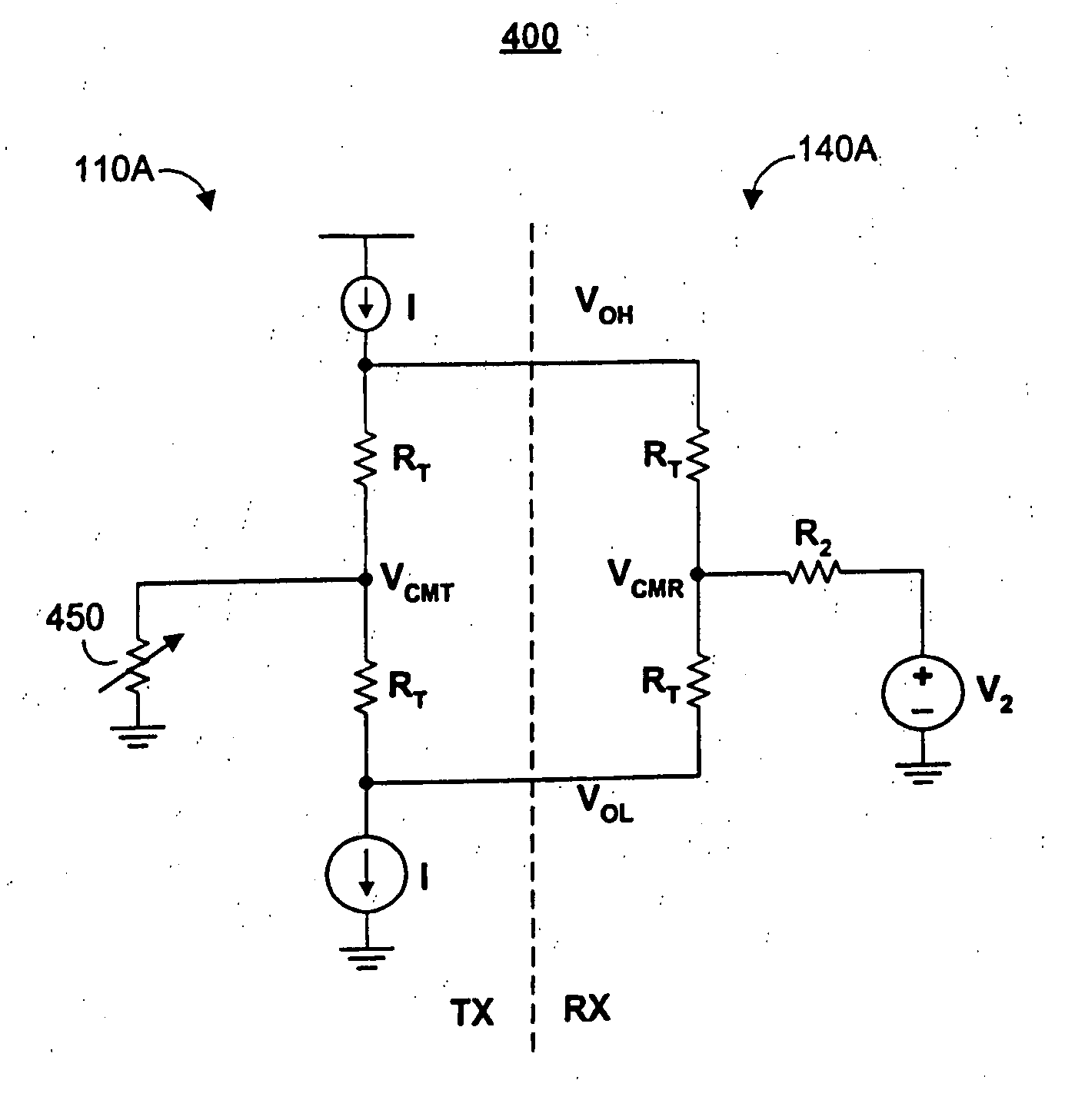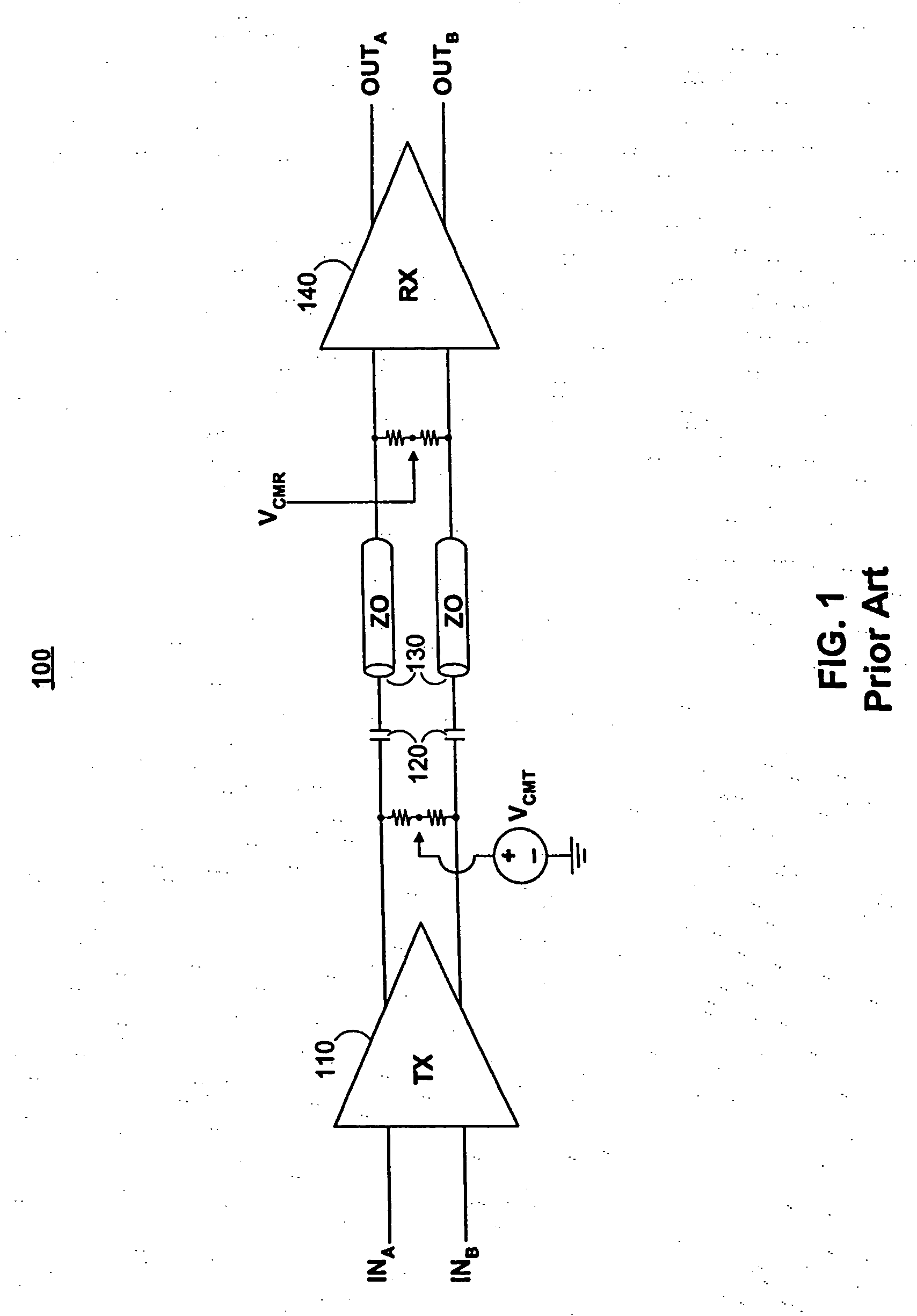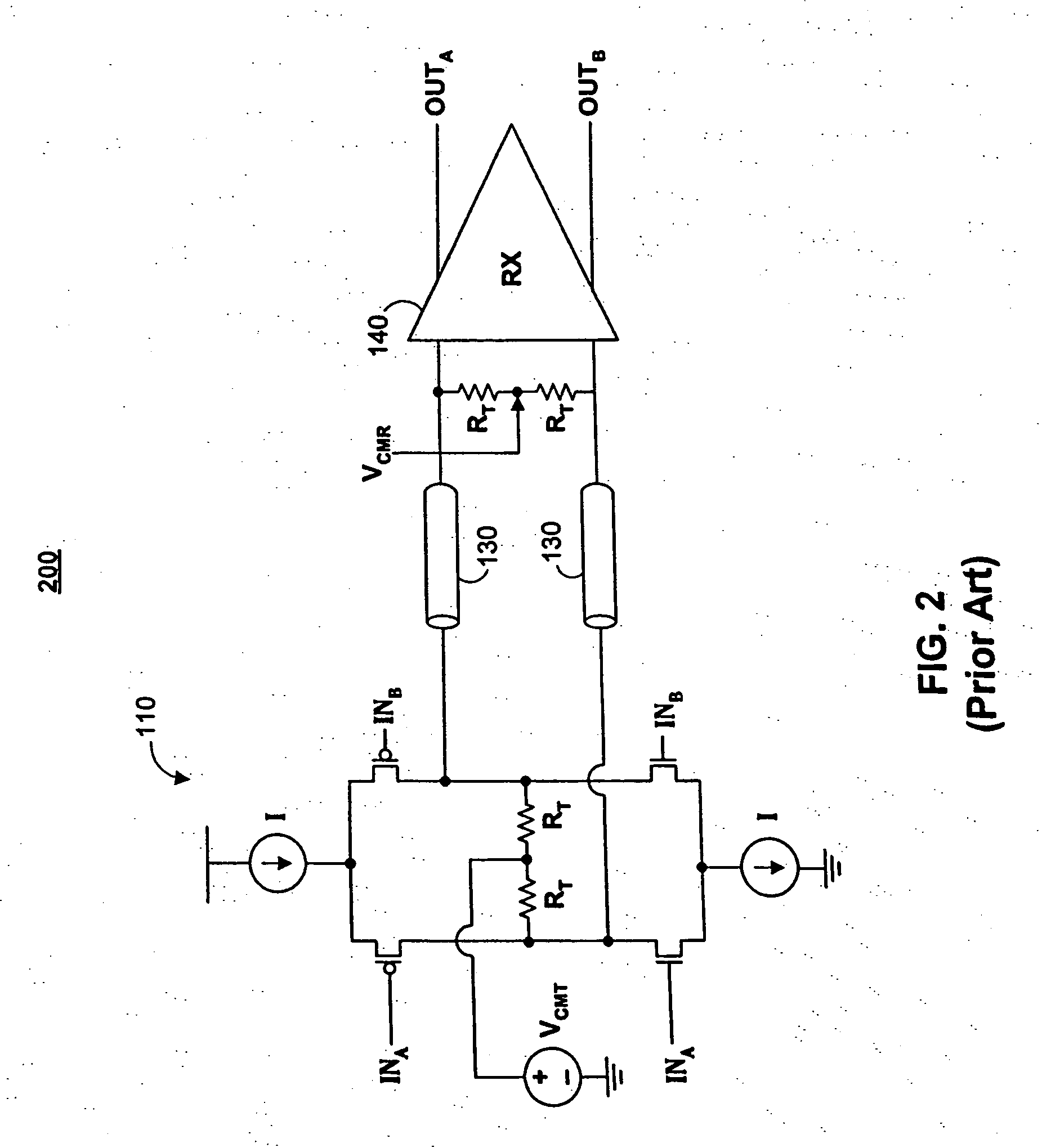Methods and apparatus to DC couple LVDS driver to CML levels
a technology of dc coupler and driver, applied in the direction of logic circuit coupling arrangement, pulse technique, reliability increasing modification, etc., can solve the problem of difficult dc coupler of lvds transceiver to a cml transceiver, and achieve the effect of widening the customer bas
- Summary
- Abstract
- Description
- Claims
- Application Information
AI Technical Summary
Benefits of technology
Problems solved by technology
Method used
Image
Examples
Embodiment Construction
[0016]FIG. 1 shows a simplified block diagram 100 of a typical AC coupled transmitter to receiver link. Differential transmitter 110 is connected through two AC coupling capacitors 120 over transmission lines 130 to differential receiver 140. Transmitter 110 may be an LVDS transmitter. An LVDS transmitter may have a common mode voltage VCMT that may be terminated to a voltage level that is approximately half of the supply voltage. Receiver 140 may be a CML receiver. A CML receiver may be terminated to a voltage level that is approximately equal to the supply voltage. In order to connect the LVDS transmitter 110 with the CML receiver 140, coupling capacitors 120 may be used to AC couple the transmitter and receiver allowing each to operate at its own DC level.
[0017] LVDS transceivers are preferred over CML transceivers in PLDs because of their lower power consumption, more symmetrical single ended outputs, and better AC coupling support. However, in accordance with the present inven...
PUM
 Login to View More
Login to View More Abstract
Description
Claims
Application Information
 Login to View More
Login to View More - R&D
- Intellectual Property
- Life Sciences
- Materials
- Tech Scout
- Unparalleled Data Quality
- Higher Quality Content
- 60% Fewer Hallucinations
Browse by: Latest US Patents, China's latest patents, Technical Efficacy Thesaurus, Application Domain, Technology Topic, Popular Technical Reports.
© 2025 PatSnap. All rights reserved.Legal|Privacy policy|Modern Slavery Act Transparency Statement|Sitemap|About US| Contact US: help@patsnap.com



